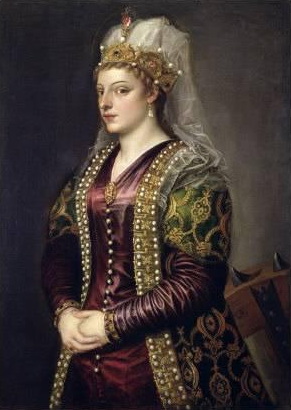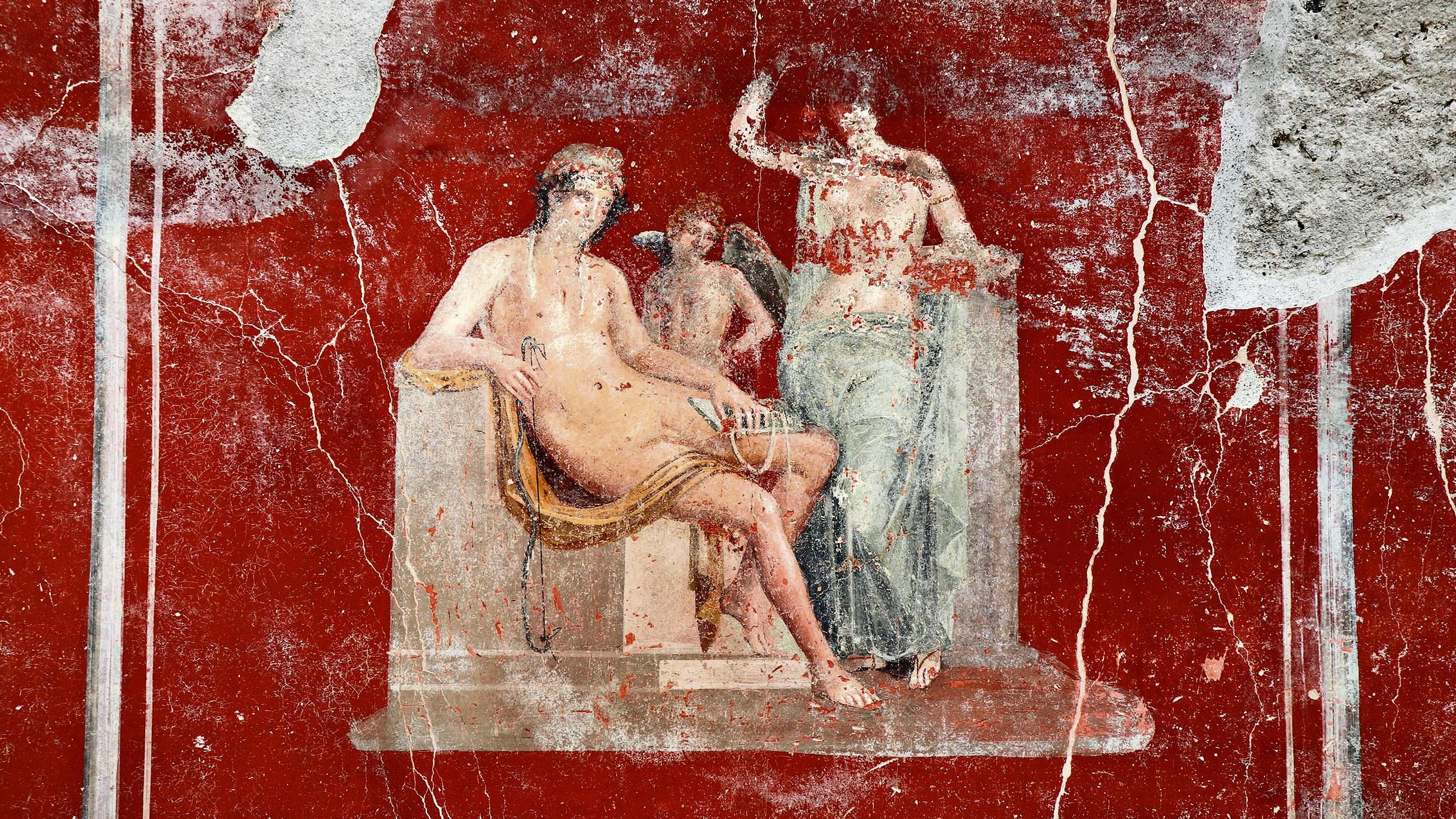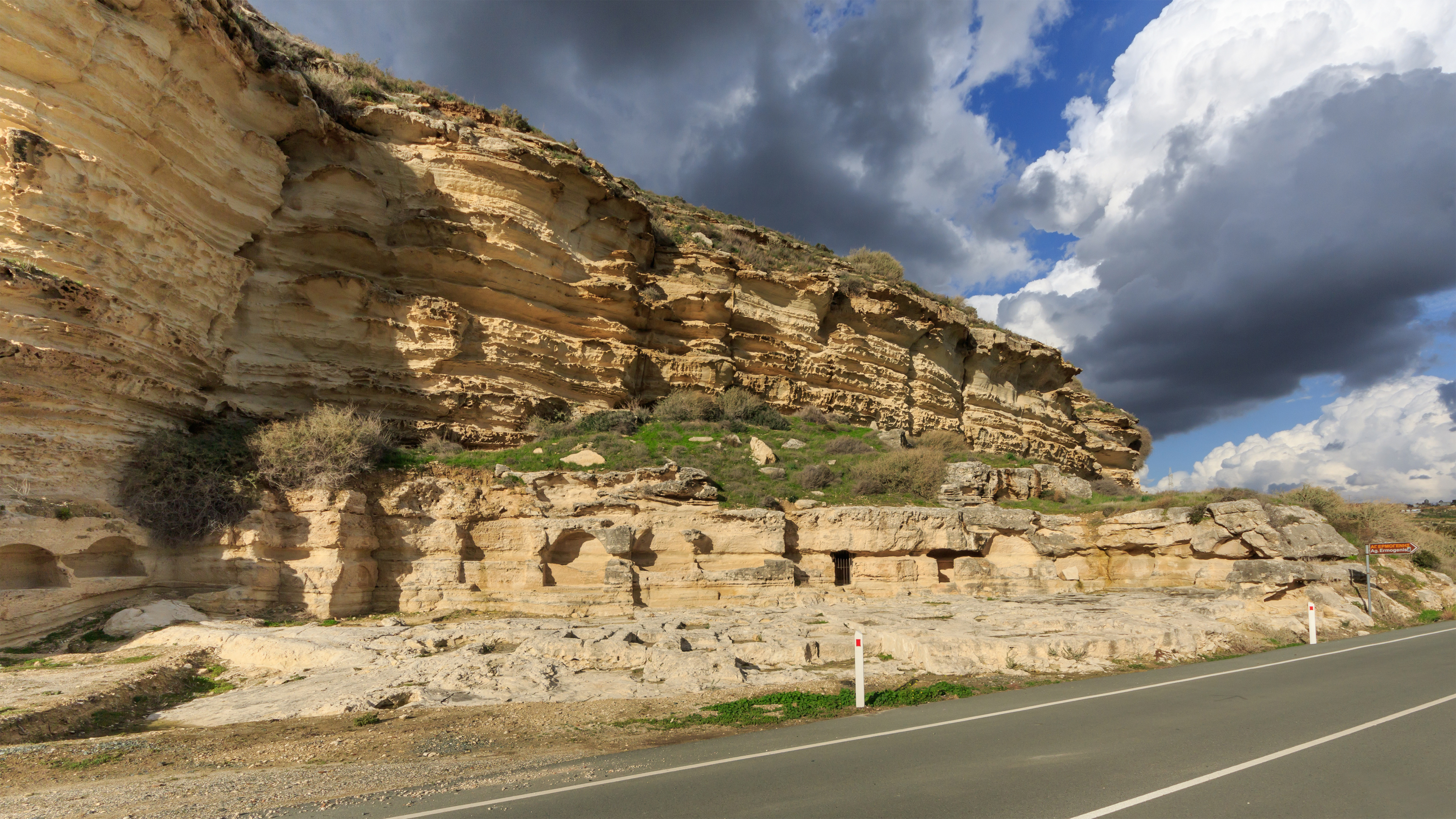|
Stefano Lusignan
Stefano Lusignan (1537–1590), also known as Étienne de Lusignan and Estienne de Lusignan, was a priest, scholar, and titular bishop of Venetian Cyprus who migrated to Italy and France. Life Lusignan was born in Nicosia, in Venetian Cyprus, a descendant of the royal House of Lusignan. When he was young, Lusignan joined the Dominican Order and studied under an Armenian bishop named Ioulianos. By 1562 he was a priest and worked under two Latin bishops of Limassol, Andrea Mocenigo and Serafim Fortibraccia. By 1570, he was living in a monastery in Naples, in the Kingdom of Naples, where he began writing his best-known work, ''Chorograffia''. In 1571, Cyprus fell to the Ottoman Empire, and after that Lusignan spent much of his time collecting ransom money to buy the freedom of relations who had been captured. In 1572, he moved to a monastery at Bologna, a university city in the Papal States. There, he first published his work named ''Chorograffia''. In 1575 he moved to Padua, un ... [...More Info...] [...Related Items...] OR: [Wikipedia] [Google] [Baidu] |
Venetian Cyprus
The island of Cyprus was an overseas possession of the Republic of Venice The Republic of Venice ( vec, Repùblega de Venèsia) or Venetian Republic ( vec, Repùblega Vèneta, links=no), traditionally known as La Serenissima ( en, Most Serene Republic of Venice, italics=yes; vec, Serenìsima Repùblega de Venèsia ... from 1489, when the independent Kingdom of Cyprus ended, until 1570–71, when the island was Ottoman conquest of Cyprus, conquered by the Ottoman Empire. History Acquisition Venice for centuries wanted to control Cyprus and Venetian merchants worked on the island beginning in 1000 AD, when the Venetian (commercial and military) expansion in the eastern Mediterranean had started. In 1468, James II of Cyprus of the house of Lusignan became King of Cyprus. In 1468, he chose Catherine Cornaro (born in Venice from the noble family of the "Corner") as his wife and Queen consort of Cyprus. The King's choice was extremely pleasing to the Republic of Venice, as i ... [...More Info...] [...Related Items...] OR: [Wikipedia] [Google] [Baidu] |
Strabo
Strabo''Strabo'' (meaning "squinty", as in strabismus) was a term employed by the Romans for anyone whose eyes were distorted or deformed. The father of Pompey was called " Pompeius Strabo". A native of Sicily so clear-sighted that he could see things at great distance as if they were nearby was also called "Strabo". (; el, Στράβων ''Strábōn''; 64 or 63 BC 24 AD) was a Greek geographer, philosopher, and historian who lived in Asia Minor during the transitional period of the Roman Republic into the Roman Empire. Life Strabo was born to an affluent family from Amaseia in Pontus (in present-day Turkey) in around 64BC. His family had been involved in politics since at least the reign of Mithridates V. Strabo was related to Dorylaeus on his mother's side. Several other family members, including his paternal grandfather had served Mithridates VI during the Mithridatic Wars. As the war drew to a close, Strabo's grandfather had turned several Pontic ... [...More Info...] [...Related Items...] OR: [Wikipedia] [Google] [Baidu] |
University Of Padua
The University of Padua ( it, Università degli Studi di Padova, UNIPD) is an Italian university located in the city of Padua, region of Veneto, northern Italy. The University of Padua was founded in 1222 by a group of students and teachers from Bologna. Padua is the second-oldest university in Italy and the world's fifth-oldest surviving university. In 2010, the university had approximately 65,000 students. In 2021, it was ranked second "best university" among Italian institutions of higher education with more than 40,000 students according to Censis institute, and among the best 200 universities in the world according to ARWU. History The university is conventionally said to have been founded in 1222 when a large group of students and professors left the University of Bologna in search of more academic freedom ('Libertas scholastica'). The first subjects to be taught were law and theology. The curriculum expanded rapidly, and by 1399 the institution had divided in two: a ''U ... [...More Info...] [...Related Items...] OR: [Wikipedia] [Google] [Baidu] |
Adonis
In Greek mythology, Adonis, ; derived from the Canaanite word ''ʼadōn'', meaning "lord".R. S. P. Beekes, ''Etymological Dictionary of Greek'', Brill, 2009, p. 23. was the mortal lover of the goddess Aphrodite. One day, Adonis was gored by a wild boar during a hunting trip and died in Aphrodite's arms as she wept. His blood mingled with her tears and became the anemone flower. Aphrodite declared the Adonia festival commemorating his tragic death, which was celebrated by women every year in midsummer. During this festival, Greek women would plant "gardens of Adonis", small pots containing fast-growing plants, which they would set on top of their houses in the hot sun. The plants would sprout, but soon wither and die. Then the women would mourn the death of Adonis, tearing their clothes and beating their breasts in a public display of grief. The Greeks considered Adonis's cult to be of Near Eastern origin. Adonis's name comes from a Canaanite word meaning "lord" and most ... [...More Info...] [...Related Items...] OR: [Wikipedia] [Google] [Baidu] |
Aphrodite
Aphrodite ( ; grc-gre, Ἀφροδίτη, Aphrodítē; , , ) is an ancient Greek religion, ancient Greek goddess associated with love, lust, beauty, pleasure, passion (emotion), passion, and procreation. She was syncretized with the Roman goddess . Aphrodite's major symbols include Myrtle (common), myrtles, roses, doves, Old World sparrow, sparrows, and swans. The cult of Aphrodite was largely derived from that of the Ancient Canaanite religion, Phoenician goddess Astarte, a cognate of the East Semitic goddess Ishtar, whose cult was based on the Sumerian religion, Sumerian cult of Inanna. Aphrodite's main cult centers were Kythira, Cythera, Cyprus, Corinth, and Athens. Her main festival was the Aphrodisia, which was celebrated annually in midsummer. In Laconia, Aphrodite was worshipped as a warrior goddess. She was also the patron goddess of Prostitution in ancient Greece, prostitutes, an association which led early scholars to propose the concept of "sacred prostitution" in Gr ... [...More Info...] [...Related Items...] OR: [Wikipedia] [Google] [Baidu] |
Cinyras
In Greek mythology, Cinyras (; grc, Κινύρας – ''Kinyras'') was a famous hero and king of Cyprus. Accounts vary significantly as to his genealogy and provide a variety of stories concerning him; in many sources he is associated with the cult of Aphrodite on Cyprus, and Adonis, a consort of Aphrodite, is mentioned as his son. Some scholars have proposed a connection with the minor Ugaritic deity Kinnaru, the god of the lyre. The city Cinyreia on Cyprus was believed to have taken its name from Cinyras. According to Strabo, he had previously ruled in the city of Byblos in Phoenicia. Biography The name Cinyras does not appear again until he is mentioned by Pindar as "beloved of Apollo," and the priest of Aphrodite. Pindar mentions Cinyras as being fabulously rich in ''Nemean Ode 8'' line 18. Later, in Greek and Roman literature and in the Christian fathers such as Clement of Alexandria, the story of Cinyras is elaborated. They say that on Cyprus, Cinyras ... [...More Info...] [...Related Items...] OR: [Wikipedia] [Google] [Baidu] |
Amathus
Amathus or Amathous ( grc, Ἀμαθοῦς) was an ancient city and one of the ancient royal cities of Cyprus until about 300 BC. Some of its impressive remains can be seen today on the southern coast in front of Agios Tychonas, about west of Larnaca and east of Limassol. Its ancient cult sanctuary of Aphrodite was the second most important in Cyprus, her homeland, after Paphos. Archaeological work has recently been continued at the site and many finds are exhibited in the Limassol Museum. History Pre-history and ancient era The pre-history of Amathus survives in both myth and archaeology. Archaeology has detected human activity from the earliest Iron Age, BC. The city's legendary founder was Cinyras, linked with the birth of Adonis, who called the city after his mother Amathous. According to a version of the Ariadne legend noted by Plutarch, Theseus abandoned Ariadne at Amathousa, where she died giving birth to her child and was buried in a sacred tomb. Acco ... [...More Info...] [...Related Items...] OR: [Wikipedia] [Google] [Baidu] |
Kourion
Kourion ( grc, Koύριov; la, Curium) was an important ancient Greek city-state on the southwestern coast of Cyprus. In the twelfth century BCE, after the collapse of the Mycenaean palaces, Greek settlers from Argos arrived on this site. In the seventeenth century, Kourion suffered from five heavy earthquakes, but the city was mostly rebuilt. The acropolis of Kourion, located 1.3 km southwest of Episkopi and 13 km west of Limassol, is located atop a limestone promontory nearly 100 metres high along the coast of Episkopi Bay. The Kourion archaeological area lies within the British Overseas Territory of Akrotiri and Dhekelia and is managed by the Cyprus Department of Antiquity. History of Kourion Early history of the area The earliest identified occupation within the Kouris River valley is at the hilltop settlement of Sotira-Teppes, located 9 km northwest of Kourion. This settlement dates to the Ceramic Neolithic period ( 5500–4000 BCE). Another hilltop ... [...More Info...] [...Related Items...] OR: [Wikipedia] [Google] [Baidu] |
Salamis, Cyprus
Salamis ( grc, Σαλαμίς, el, Σαλαμίνα, tr, Salamis) is an ancient Greek city-state on the east coast of Cyprus, at the mouth of the river Pedieos, 6 km north of modern Famagusta. According to tradition, the founder of Salamis was Teucer, son of Telamon, king of the Greek island of Salamis, who could not return home after the Trojan war because he had failed to avenge his brother Ajax. History Early history The earliest archaeological finds go back to the eleventh century BC (Late Bronze Age III). The copper ores of Cyprus made the island an essential node in the earliest trade networks, and Cyprus was a source of the orientalizing cultural traits of mainland Greece at the end of the Greek Dark Ages, hypothesized by Walter Burkert in 1992. Children's burials in Canaanite jars indicate a Phoenician presence. A harbour and a cemetery from this period have been excavated. The town is mentioned in Assyrian inscriptions as one of the kingdoms of ''Iadnana'' (Cyp ... [...More Info...] [...Related Items...] OR: [Wikipedia] [Google] [Baidu] |
Diogenes Laërtius
Diogenes Laërtius ( ; grc-gre, Διογένης Λαέρτιος, ; ) was a biographer of the Greek philosophers. Nothing is definitively known about his life, but his surviving ''Lives and Opinions of Eminent Philosophers'' is a principal source for the history of ancient Greek philosophy. His reputation is controversial among scholars because he often repeats information from his sources without critically evaluating it. He also frequently focuses on trivial or insignificant details of his subjects' lives while ignoring important details of their philosophical teachings and he sometimes fails to distinguish between earlier and later teachings of specific philosophical schools. However, unlike many other ancient secondary sources, Diogenes Laërtius generally reports philosophical teachings without attempting to reinterpret or expand on them, which means his accounts are often closer to the primary sources. Due to the loss of so many of the primary sources on which Diogenes rel ... [...More Info...] [...Related Items...] OR: [Wikipedia] [Google] [Baidu] |
Plutarch
Plutarch (; grc-gre, Πλούταρχος, ''Ploútarchos''; ; – after AD 119) was a Greek Middle Platonist philosopher, historian, biographer, essayist, and priest at the Temple of Apollo in Delphi. He is known primarily for his '' Parallel Lives'', a series of biographies of illustrious Greeks and Romans, and '' Moralia'', a collection of essays and speeches. Upon becoming a Roman citizen, he was possibly named Lucius Mestrius Plutarchus (). Life Early life Plutarch was born to a prominent family in the small town of Chaeronea, about east of Delphi, in the Greek region of Boeotia. His family was long established in the town; his father was named Autobulus and his grandfather was named Lamprias. His name is derived from Pluto (πλοῦτον), an epithet of Hades, and Archos (ἀρχός) meaning "Master", the whole name meaning something like "Whose master is Pluto". His brothers, Timon and Lamprias, are frequently mentioned in his essays and dialogue ... [...More Info...] [...Related Items...] OR: [Wikipedia] [Google] [Baidu] |
Pausanias (geographer)
Pausanias ( /pɔːˈseɪniəs/; grc-gre, Παυσανίας; c. 110 – c. 180) was a Greek traveler and geographer of the second century AD. He is famous for his ''Description of Greece'' (, ), a lengthy work that describes ancient Greece from his firsthand observations. ''Description of Greece'' provides crucial information for making links between classical literature and modern archaeology. Biography Not much is known about Pausanias apart from what historians can piece together from his own writing. However, it is mostly certain that he was born c. 110 AD into a Greek family and was probably a native of Lydia in Asia Minor. From c. 150 until his death in 180, Pausanias travelled through the mainland of Greece, writing about various monuments, sacred spaces, and significant geographical sites along the way. In writing ''Description of Greece'', Pausanias sought to put together a lasting written account of "all things Greek", or ''panta ta hellenika''. Living in th ... [...More Info...] [...Related Items...] OR: [Wikipedia] [Google] [Baidu] |






